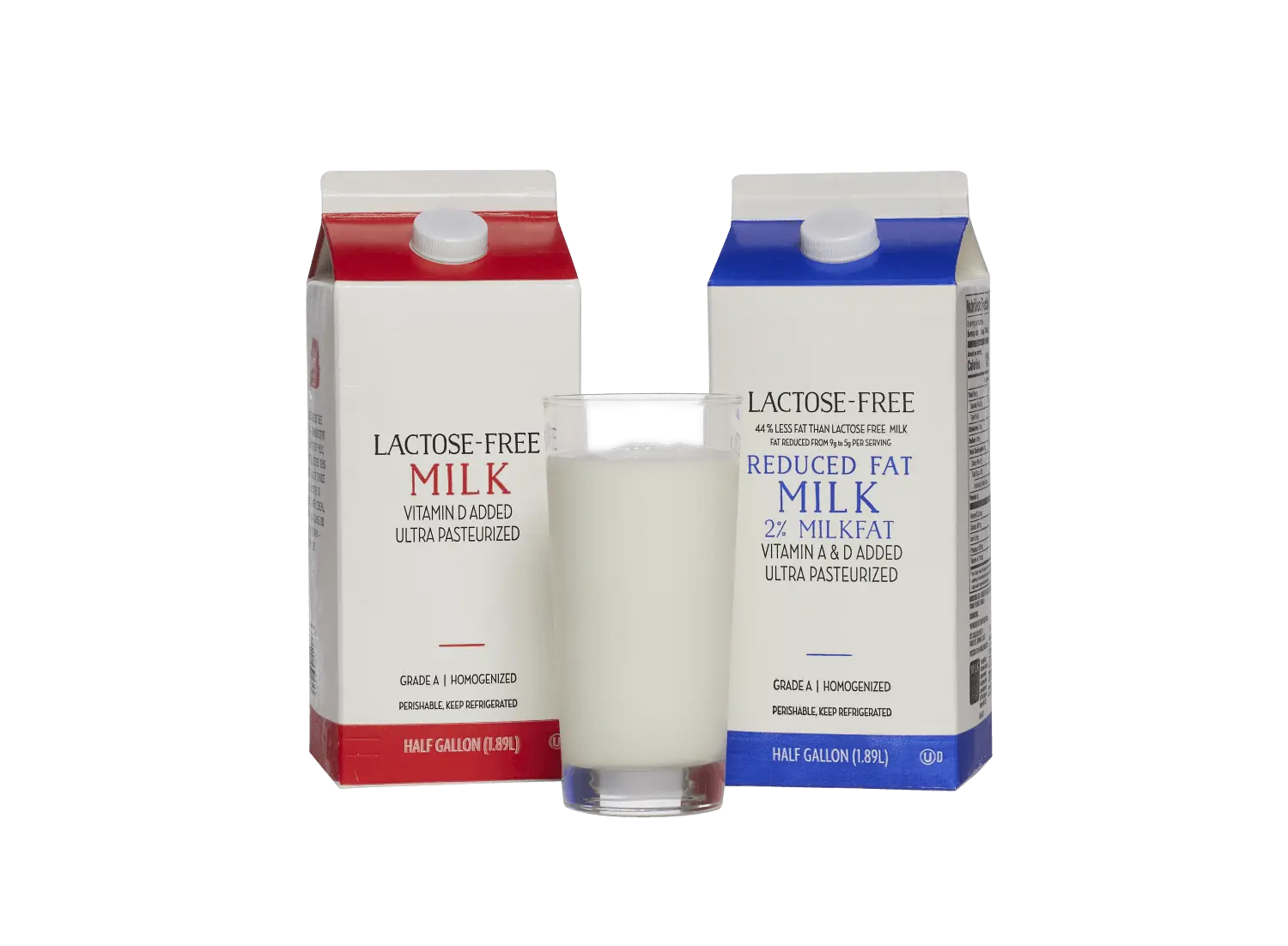Lactose-Free Milk: What is it and How is it Made?
Lactose-free milk is still real cow’s milk – real dairy – made for those with lactose intolerance. The lactose has been broken down to help the body digest it or, in some cases, the lactose in the milk is filtered out altogether.
Here we answer some common questions about what lactose-free milk means and what makes milk lactose-free:
What is lactose?
Lactose is the natural sugar found in milk and many other dairy foods made from milk, like yogurt and ice cream. Learn more about lactose here.
What is lactose-free milk?
The body makes a natural enzyme called lactase to help digest lactose. If your body doesn’t make enough lactase, you may not be able to digest lactose properly, which can lead to lactose intolerance symptoms. In response to this, some milk companies make lactose-free milk, which is easier to digest.
How is lactose-free milk made?
Some milk companies take real cow’s milk and break down lactose, the natural sugar in milk, into its two simple sugars. This makes it easier to digest for those who may not have enough lactase in their systems. Other milk companies may choose to filter out the lactose.
What is the nutritional value of lactose-free milk?
The great news is lactose-free milk provides the same essential nutrients as regular milk, such as calcium, protein, vitamin D and B vitamins.
Why does lactose-free milk taste sweet?
In the cases where the lactose is broken down into simpler sugars, some think lactose-free milk tastes sweeter than regular milk.
How can you enjoy lactose-free milk?
Many enjoy it the same way they enjoy regular milk, and we think it pairs well with cereal, coffee, cocoa and more. Check our lactose-free milk recipes for inspiration.
If you think you may have lactose intolerance, talk to your doctor and know that there are options you can try. Fortunately, there are many tips and solutions that may help you incorporate milk, cheese and yogurt back into your diet.
















